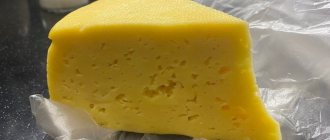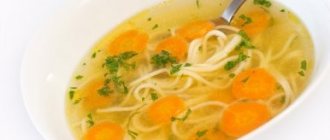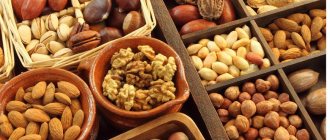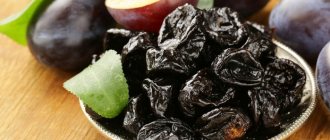Porridges for gastritis are the basis of therapeutic dietary tables No. 1 and No. 2, which are designed for diseases of the stomach with damaged mucous membrane. They are allowed to be used for different types and stages of the disease in a certain form. Recommendations also concern cooking methods and the degree of boiling. Healthy and prohibited cereals are listed based on the balance of gastric acidity.
The beneficial qualities of porridge help digestion, spare the inflamed walls of the stomach, relieve inflammation, and restore digestive function.
At the same time, the abundance of coarse dietary fiber in some cereals makes them unacceptable in the acute phase - such cereals are more likely to cause harm, irritate inflamed tissues, and aggravate the painful condition.
Porridges for gastritis are the basis of dietary nutrition, speed up the healing process, and help normalize the functioning of the gastrointestinal tract. Porridge is prescribed by specialists for low and high acidity, but the diet has slight differences. Each cereal affects the body in its own way, so it is recommended not to stop at just one cereal; you should alternate dishes throughout the week, guided by how you feel.
Beneficial properties of cereals for gastritis
The stomach accepts a lump of chewed food processed by saliva enzymes. Active secretion of gastric juice begins, which includes mucus, pectin, hydrochloric acid, and bicarbonates. Thanks to digestive juices, the lump swells, splits, and undergoes hydrolysis. Next, the contents move into the duodenum.
For digestion to proceed normally, the gastric mucosa must clearly perform biological functions: secretion of all juice components, peristalsis, breakdown of food components. If even one link fails, the process of digestion and absorption is disrupted.
The inflamed membrane with gastritis needs a gentle regime - thermal, mechanical, chemical, and our body needs a full supply of nutrients, vitamins, microelements. Porridge will help saturate the body with the necessary elements during gastritis.
It’s not for nothing that porridge is called a cure for gastritis - its enveloping properties protect the shell and reduce the aggressive effects of hydrochloric acid. The ability to quickly swell, break down and digest allows porridges not to irritate the stomach and reduce internal pressure and pain.
The rich composition of cereal porridges with useful elements covers the basic needs of the body and supplies it with:
- slow-release carbohydrates;
- vitamins;
- fiber;
- microelements;
- vegetable protein;
- vegetable fats.
A person, having eaten porridge with gastritis, does not feel heaviness, fullness, and is easily and for a long time satiated.
The effect of cereals on the body
Proper dietary nutrition is the key to a quick recovery and an effective method of preventing exacerbations. Cereals enrich the body with fiber, beneficial microelements and vitamins. But thanks to their unique chemical composition, each of them has its own mechanism of action.
Beneficial properties of the dish for the stomach
Cereals improve the digestion process and promote proper intestinal function. Useful properties of cereals:
- saturates well without a feeling of heaviness in the epigastric region;
- contain vitamins and minerals in large quantities;
- high concentration of fiber, amino acids;
- source of plant proteins.
Cereal dishes have astringent properties. They envelop the stomach, protecting it from damage caused by gastritis.
What porridges are indicated for different stages of gastritis
The benefits and harms of porridge for gastritis at different stages of the disease depend on how and from what grain the dish is prepared. Gastritis can be acute, aggravated, in the phase of attenuation of painful manifestations (remission).
Diet for gastritis is an integral part of therapy; it is prescribed by a gastroenterologist when drawing up a treatment regimen.
Be sure to follow your doctor's instructions, otherwise the condition may worsen.
Porridge in the acute period of illness
For the acute phase of gastritis, therapeutic diet No. 1A is suitable, prescribing only mucous cereal soups and warm liquid porridges, from days 2 to 4 of treatment.
To do this, boil it thoroughly in a large amount of water:
- semolina;
- oatmeal (cereals);
- round rice;
- chopped rice;
- cereal flour (oatmeal, rice flour).
It is allowed to season the finished dish with milk, butter, cream, milk and egg filling. Salt is limited to a minimum of 8 grams per day. Food is divided into 6 fractional meals, of which only 2 are porridge and soup.
Porridge after exacerbation of gastritis (subacute period)
When a sharp exacerbation subsides, a gradual transition to good nutrition is necessary. For adaptation during the period of attenuation of aggravated gastritis, table No. 1B or No. 1 was developed. You can switch to it as soon as relief comes or the doctor allows it. The diet is supplemented with milk soups from small cereals, liquid or semi-liquid milk porridges in a ground state.
Boil for a long time in water or half and half with milk:
- Semolina;
- Buckwheat;
- Oatmeal;
- Rice;
- Rice or buckwheat;
- Vermicelli;
- Buckwheat, oatmeal, rice flour.
The proportion of salt has been increased to 10 grams per day. Cooked cereals should be eaten warm and fresh. It is better to include porridge for breakfast or dinner, soup for lunch.
Cereal dishes are seasoned with a milk-egg mixture, milk, non-acidic fresh cottage cheese, cream, butter, honey, and sugar.
Porridge for gastritis in remission
With chronic gastritis in the attenuation stage, digestion gradually normalizes. The purpose of the diet during this period is to prevent new exacerbations and not to irritate the stomach with aggressive food (spicy, pickled, difficult to digest).
If you adhere to treatment table No. 2, you can remove most of the unpleasant symptoms of gastritis.
The diet according to diet No. 2 is considered a complete diet and can be followed for a long time. Cereal soups with vegetable, low-fat fish and meat, mushroom, and milk broth are allowed, as well as boiled and crumbly porridges. Dishes should be eaten warm, fresh; the daily intake of cereal is unlimited, but it should be boiled until soft or ground.
What cereals and porridges are allowed for gastritis in the remission phase:
- Buckwheat;
- Oatmeal;
- Manna;
- Rice;
- Corn (limited);
- Wheat;
- Barley (limited);
- Noodles and vermicelli.
The dressing for dishes cooked with cereals is varied. These are sour cream, milk, cream, natural yogurt, mild cheese, milk sauce, butter, cottage cheese, pieces of peeled sweet fruit, honey, sugar. With your doctor's permission, you can add jam, preserves, and fruit puree to porridge.
Legumes, pearl barley and millet are excluded. Regarding corn and barley, it is better to ask a doctor for advice.
Porridge for patients with gastritis with high acidity
When the acidity level exceeds the norm, the diet is adjusted so as not to provoke excessive acid secretion. Damaged stomach walls are too sensitive - the aggressive effect of acid provokes inflammation, adds discomfort, and leads to digestive failure.
The choice of porridge for gastritis with high acidity, regardless of the stage of the disease, should be approached responsibly. Some cereals can increase the release of excess acid, provoke painful heartburn, lead to unpleasant sensations, and worsen the disease.
Gastroenterologists and nutritionists agree that cereals are unacceptable for gastritis with a high level of acidity:
- Millet;
- Pearl barley;
- Corn;
- Barley;
- Beans.
It is not recommended to season with fermented milk products, except for non-acidic cottage cheese, sour cream, sour or coarse fruits, and dried fruits.
Milk, butter, milk-egg filling, soft, non-acidic and mild cheeses are allowed. The consumption of honey, salt and sugar is agreed with the doctor, as it depends on concomitant diseases.
Porridges for those suffering from gastritis with low acidity
In case of insufficient acidity, medical recommendations have similarly been developed on what cereals can be eaten with gastritis with a low acidity level.
Not all cereals are suitable for patients with this type of pathology - some lower the already low level of acid, which leads to insufficient breakdown of food. The lump stagnates, gastric pressure increases. The result is heaviness, pain, distension, fermentation, flatulence, bowel dysfunction, poor absorption of fats, proteins, vitamins, microelements, and other nutrients.
The goal of the diet for hypoacid gastritis is to maximally stimulate the secretion of gastric juice and the secretion of hydrochloric acid, while sparing the mucous membrane. For people with low acidity, it is better to exclude certain types of cereals in the acute phase or limit them during the relief period:
- Coarse grind;
- Whole grains;
- Undercooked;
- Steamed.
Barley, oat cereals (replaced with flakes), wheat with bran, large pasta, beans, and beans are limited.
Composition of wheat.
Wheat grains are not only nutritious, but also very tasty. The composition of the product amazes with the variety of useful components, such as:
- Folic acid.
- Beta carotene.
- Protein.
- Simple and complex carbohydrates.
- Healthy fats.
- Starch.
- Vitamin A, E, B6, B2, B1, PP.
- Sugar.
- Alimentary fiber.
The energy value of wheat is 342 calories per 100 grams; the calorie content of the finished dish depends on the method of its preparation.
Which ones can you eat?
One of its main components is the “correct” porridge. For gastritis, such a dish should become the main food, since it has an astringent effect, is rich in proteins, vitamins, and also contains iron and other trace elements. It should be noted that this disease can be expressed in various forms, and the stages of the disease are also different. The healthiest cereals are:
- Oatmeal. Has an analgesic effect.
- Buckwheat. Actively fights stress.
- Millet. Eliminates dysbacteriosis, normalizes stool.
- Manna. Suitable for the prevention of malignant tumors in the intestines.
- Rice. Rice is sometimes called a “pill for gastritis” because (like oatmeal) it has an enveloping effect.
- Linen. With its help you can quickly empty your intestines.
Semolina
Made from wheat, contains a large amount of zinc and iron. These microelements normalize the level of hydrochloric acid, so it is recommended to eat porridge for any form of gastritis. The finished dish is soft, does not burden the stomach, is easily digested, and increases energy reserves. It is allowed to cook in water, milk, add butter. This is one of the first dishes that you are allowed to eat after surgery on the stomach and other digestive organs.
Semolina porridge is included in diets for erosive forms and stomach ulcers. In case of hypoacid gastritis, it accelerates the restoration of the mucous membrane. It works well as a symptomatic remedy for spasmodic stomach pain, and with constant use it has an anxiolytic effect (removes stress and feelings of fear).
Semolina porridge is recommended for pregnant women in the absence of allergic reactions (rare).
Not indicated for young children due to the content of a specific mucopolysaccharide - gliodin. This component impairs the absorption of food by the intestinal villi. Semolina interferes with the absorption of vitamin D in children under 3 years of age, which can lead to the formation of rickets.
Constant consumption of semolina porridge can lead to weight gain.
Semolina is cooked at the rate of 300 mg of cereal per 1 liter of liquid (water, milk). Bring the liquid to a boil, add the cereal, cook for 1-2 minutes, stirring, remove from heat, cover with a lid. The porridge is infused for 20 minutes until it swells.
Millet
Cereals contain a large amount of useful minerals and amino acids. Improves digestion, stimulates the production of gastric juice. Cereals are boiled in water and milk. The consistency should remain liquid. For gastritis with low acidity at the acute stage, it is recommended to initially grind the cereal in a blender. Due to the increased amount of fiber, stool thins, so it is not recommended for diarrhea. Experts recommend consuming millet after several days of active therapy with other cereals.
Rice
One of the main porridges with high acidity. The mucus that forms during the cooking process is especially useful. In the acute form, you should use the decoction several times a day to reduce hydrochloric acid until your health returns to normal. Rice porridge is prepared with milk and water. The cereal should be well cooked and the dish should remain liquid. If necessary, the grains can initially be ground in a blender.
A distinctive property of rice porridge for gastritis is its pronounced ability to absorb and eliminate toxins. Rice porridge can be used even in cases of serious poisoning as a sorbent (if you don’t have activated carbon on hand, for example).
This dish is indicated for nursing mothers and pregnant women, because... reduces intoxication during gastritis, and also reduces the manifestation of inflammatory reactions.
Rice porridge is safe for children and can be given with first foods. Widely used as a dietary dish for all age groups.
For porridge, take round rice, rinse and pour into cold water. Bring to a boil and cook for 10 minutes. After this, the rice can be cooked with milk and other ingredients. It is better not to boil rice in milk right away - the grains do not boil well.
Barley
Has a high enveloping ability. It acts like medicines - antacids. Prevents irritation of the mucous membrane, promotes digestion, normalizes acidity levels. Experts recommend eating barley porridge 20 minutes before eating another dish, as a medicine. When ready, the porridge should have a soft, liquid consistency.
Buckwheat
One of the most active cereals. The effect of the dish can be noticed almost immediately. Buckwheat porridge contains a huge amount of amino acids and fiber. Due to this, it increases energy reserves, has a general strengthening effect, facilitates digestion, and eliminates constipation. It has the ability to both reduce acidity and increase it.
- reduces stress levels. For this reason, dishes with buckwheat porridge can be recommended during the period of remission;
- accelerates the restoration of mucous membranes, restores low hemoglobin (contains iron);
- is a preventative against ulcer complications - stomach cancer.
Buckwheat is rich in fiber, which does not allow it to be recommended in the acute phase of the inflammatory process.
It is hypoallergenic, i.e. It can be used by pregnant and lactating women, as well as children. To restore the body after an illness, buckwheat porridge with milk is used.
Buckwheat is poured into a thick-walled pan (can be a cauldron or a duck pot) on the basis that out of 100 gr. cereals will be 300 gr. porridge. Do not stir the buckwheat before cooking. It is good to wrap the already cooked porridge in a saucepan in a blanket for 20-30 minutes.
Wheat porridge
It is recommended to use for chronic gastritis in remission. Porridge increases energy reserves, strengthens the body, and improves overall well-being. Quickly puts patients back on their feet after surgery. Wheat cereals should be boiled until soft and eaten no more than 3 times a week.
Corn
An extremely nutritious porridge, good for digestion, but only in remission. During an exacerbation of the disease, it is prohibited to consume cereals. Corn porridge should be prepared using water or milk, adding butter. The mass should remain liquid.
Oatmeal, rolled oatmeal
Porridge removes toxins, coats the walls of the stomach, normalizes stool, eliminates nausea, relieves pain, and alleviates the patient’s condition with any form of gastritis. In the acute stage, liquid oatmeal with milk is especially useful. The universal product can be consumed at low and high acidity. However, the therapeutic properties can be increased with additional ingredients. If the acidity is low, honey and nuts are added; if the acidity is high, dried fruits are added.
Dietary nutrition gives good results if the diet is prepared correctly. If necessary, you should seek advice from a nutritionist or other specialist.
It is distinguished by the following properties:
- a pronounced astringent effect that reduces pain during relapse of gastritis and prevents the onset of the disease itself (preventive effect);
- the product is rich in vitamins A, B126, PP, K, A, E. Contains iron, phosphorus, magnesium, iodine, sulfur, calcium and other micro and macroelements;
- perfectly satisfies hunger, which is especially important for hyperacid gastritis, contains sufficient proteins and lipids;
- is an antidepressant, i.e. prevents exacerbation of the process under stress;
- eliminates constipation, normalizes intestinal motility;
- oatmeal promotes mucosal regeneration and contains many antioxidants;
- goes well with any food as a side dish.
For the treatment of gastritis, compressed oatmeal is better suited. Pour a glass of porridge into cold water (2 liters), bring to a boil and after 2-3 minutes turn off, leave for 20 minutes. This allows you to achieve the optimal consistency for gastritis and retain a sufficient amount of nutrients. Adding a small amount of low-fat (and non-sour) cottage cheese makes this dish ideal from a nutritional point of view.
Video on the topic: Oatmeal, sir!
Who is contraindicated in oatmeal?
In order for oatmeal to be beneficial, the dish is boiled in water. This rule especially applies to patients diagnosed with acute gastritis. With this pathology, milk is welcome, but not all patients tolerate it. This means that milk or low-fat yogurt is added to the dish after cooking.
How to choose oatmeal
Cereals should be made from whole grains or high-quality flakes. The flakes are cooked for a quarter of an hour. Before preparing the dish, it is important to consider the rules:
- The porridge is cooked to a liquid consistency.
- The dish is consumed warm.
- It is better not to add salt to oatmeal. After cooking, you can add fresh oil.
- The dish is cooked in water.
- Oatmeal and rice porridge can be consumed as dessert. Add honey and dates. Raisins or dried apricots will add flavor; raisins can only be added to the dish if the acidity is low. Before adding dried fruits to the porridge, they are soaked in water. Add dried fruits a few minutes before the dish is ready.
- Fresh apples, raspberries, and currants are added to the dish at zero acidity. For gastritis with high acidity, it is better to avoid the supplement. Before adding fruits to a dish, it is recommended to bake them in the oven or steam them. The note applies to peaches, apples, and strawberries. It is better to forget about plums and pears for stomach diseases: fruits are difficult to digest.
- It is also advisable not to consume store-bought candied fruits, since the products contain sugar and acids.
- It is not recommended to combine porridge with nuts; the kernels are difficult to digest.
- Dried figs have seeds that are difficult for the stomach to handle. It is better to refuse dried fruit.
Rules of use
Eating porridge is allowed for almost any form of gastritis, depending on the patient’s condition and his individual characteristics. However, during exacerbations, the list of permitted grains is sharply reduced. This is due to the need to switch to a gentle diet and the high fiber content of some cereals.
With increased acidity
If you have high acidity, eat porridge with milk and water. They act as a side dish. You can make a dessert from cereals if you add ripe sweet fruits. For hyperacid gastritis, the inclusion of millet porridge in the diet is encouraged. It lowers the levels, relieving acute symptoms.
At low
For hypoacid gastritis, porridge can also be consumed instead of desserts and side dishes. However, the choice is made in favor of easily digestible grains. A good option, for example, would be rice. The use of pearl barley is encouraged. It acidifies, so it will improve the patient’s condition.
Rice porridge improves the patient's condition.
During exacerbation
During an exacerbation, it is recommended to fast until the pronounced symptoms disappear, or at least for 1-2 days.
After this, the use of grains in viscous soups is allowed. You can prepare liquid porridges.
In the subacute period
In the subacute period, difficult to digest grains should be avoided. Preference is given, for example, to semolina. It contains relatively few useful substances, but almost does not increase the load on the gastrointestinal tract.
During remission
During remission, they adhere to the diet that suits the patient depending on the form of gastritis. For example, when erosions appear, liquid porridges with minimal fiber content are prepared. Preference is given to processed cereals with the outer shell removed.
Cooking features
Cereal dishes are recommended to be consumed heavily boiled. Once ready, cover them with a lid and leave on the stove for 15 minutes. Each grain has a certain cooking time, which depends on the method of processing and grinding of the grain. Typically, the manufacturer indicates on the packaging the recipe that is optimal for a specific variety and type of product.
Crumbly porridge is not suitable for patients with gastritis. The cereal is poured with enough water to make the dish liquid. This treatment will retain astringent properties, useful for the wounded mucosa.
Cereals can be cooked in milk if gastritis is not associated with low or zero stomach acidity. A person suffering from these forms of the disease is often diagnosed with intolerance to dairy products, which manifests itself in the form of intestinal disorders or dermatitis.
For gastritis with high acidity, cereals prepared with milk help neutralize excess hydrochloric acid, relieve heartburn, and eliminate belching.
The cereal is boiled in water. After swelling, milk is added to it. This cooking option preserves the beneficial properties of the products. Cereals cook better.
For stomach pain, cereals are cooked in water, without adding sugar or milk. They are pre-ground with a coffee grinder or blender. Porridge is eaten exclusively warm. Cold and overly hot dishes injure the gastric mucosa.
Rules for preparing porridge for gastritis:
- insist before use;
- for the hypoacid form of the disease, cereals are boiled in water;
- sugar is added in moderation, no more than 1 tablespoon per 300 g of porridge;
- achieve a liquid consistency;
- well boiled.
Add butter or vegetable oil to the dish. The product is generally well tolerated during remission. The oil improves intestinal motility and promotes the regeneration of mucosal cells. During exacerbations of gastrointestinal diseases, cereals are boiled in water, without adding sugar.
How to cook and eat porridges that are healthy for the stomach
For those suffering from stomach pathologies, nutritionists have developed certain rules for preparing cereals, preparing and eating porridges for gastritis. They are necessary to protect the gastric walls, affected by inflammation, from contact with digestive juices at the moment of their greatest release.
- Preparation: cereals, except semolina, are washed, grains without shell are crushed or ground;
- Preparation of porridge: the cereal is poured into cold water or half and half water with milk, the ratio is 1 to 4, brought to a boil, then cooked under low heat until soft, salted, seasoned to taste;
- Preparation of soup: washed cereals are poured into a boiling broth or low-fat light broth, cooked until soft;
- Usage: the dish is served freshly prepared, warm, in a small portion.
It is important to achieve a slimy consistency - this is the main value of porridge for gastritis. The lining of the stomach is softly enveloped, the food bolus is easily split and quickly evacuated into the intestines.
Nutrition for atrophic gastritis
Atrophic inflammation of the stomach is characterized by thinning of the mucous membrane and a decrease in functioning cells. Patients report a feeling of fullness in the stomach after eating, heaviness, rumbling in the stomach, belching, and heartburn. There is almost always no pain.
The pathological process affects the absorption of nutrients, which is why hypovitaminosis develops over time. Increased fermentation and production of hydrochloric acid leads to pathological manifestations in the digestive tract.
To reduce acidity, it is important to exclude fatty foods, fried foods, hot sauces and seasonings from your diet. Alcohol and carbonated drinks will further provoke the production of hydrochloric acid. The following foods can also increase acidity and increase the load on the stomach: onions, garlic, cabbage, radishes, radishes.
Let's consider an approximate menu that is possible for atrophic gastritis with high acidity:
- Monday. For breakfast you can eat a steamed omelet, biscuits and weakly brewed green tea. As a snack, drink low-fat yogurt. For lunch - vegetable puree soup, stew and apple juice. For an afternoon snack, prepare a cottage cheese casserole. Dinner – chicken schnitzels with vegetable stew. Two hours before bedtime, you can drink yogurt.
- Tuesday. Breakfast - cheese mixture with unsweetened homemade cakes and tea. For a snack, drink compote with zoological cookies. For lunch, prepare chicken breast broth, rice porridge and jelly. Afternoon snack – baked apple with compote. For dinner, eat a steamed cutlet with a salad dressed with olive oil.
- Wednesday. For breakfast - yogurt with muffin. For a snack, prepare compote and pancakes with chicken breast. For lunch you can eat beetroot soup and stewed fish. For an afternoon snack - pancakes with apple compote. For dinner you can eat baked potatoes and kefir.
- Thursday. Breakfast – fruit muesli and semolina porridge. For a snack – Lenten cookies with compote. Lunch – soup with meatballs, rice porridge with vegetables. Afternoon snack – apple compote and cottage cheese soufflé. For dinner you can make stewed potatoes with yogurt.
- Friday. Breakfast – two soft-boiled eggs, vegetable cutlets and jelly. Second breakfast – tea and crackers. Lunch – puree soup and baked fish. Afternoon snack - manna with yogurt. For dinner, make apple pancakes with kefir.
- Saturday. For breakfast - oatmeal, broccoli and jelly. Snack: fruit pie with tea. Lunch – puree soup, stew and baked chicken breast, as well as jelly. Afternoon snack - yesterday's bun with tea. Dinner – boiled fish with compote.
- Sunday. Breakfast - soft-boiled egg, oatmeal, stale bun and tea. Second breakfast – cheesecake and tea. Lunch - fish soup, stew, a slice of yesterday's bread and compote. Afternoon snack – homemade pie with pumpkin and apple with tea. Dinner – cheesecakes with tea.
Treatment table No. 1 involves eating boiled, stewed, baked, and steamed food
What cereals should you not eat during gastritis?
The cereals from which cereals are made contain valuable substances - fiber, vegetable fats, carbohydrates, protein, many vitamins, minerals, microelements. With minimal heat treatment they are preserved best. But with gastritis, it is necessary to sacrifice nutritional value for the sake of benefits for the diseased organ.
Popular steamed porridges are not suitable. For example, buckwheat or millet for gastritis, which they usually like to brew and eat crumbly, on the contrary, you need to boil them, make them liquid or semi-liquid, viscous. Otherwise, undercooked grains will irritate the stomach, take a long time to digest, and cause gas formation and fermentation.
It is better to limit grains that are ground with a coarse shell. This applies to wheat porridge for gastritis, whole oatmeal. Hard fibers have a negative effect on damaged mucous membranes and are difficult to process by digestive enzymes.
You should also avoid whole grain cereals, except round rice and buckwheat, barley, flaxseeds, brown rice, and beans. They are difficult to boil to the optimal consistency; the shell of the cereal can damage the mucous tissue of the stomach walls, which suffers from gastritis.
Forbidden cereals
Not all cereals are equally useful for gastritis. But this statement is true if you prepare the dish incorrectly or do not pay attention to the stage of the disease. For example, during an exacerbation period, millet porridge, wheat, corn, and barley are prohibited. At this time, it is better to eat oatmeal, buckwheat, rice, and semolina.
For a long time, pearl barley was prohibited for gastritis, primarily due to the large size of the grains, which slowed down digestion. However, it later turned out that pearl barley can increase acidity, so it is recommended for gastritis with a low content of hydrochloric acid. In addition, before preparing the grain, it is recommended to initially grind it in a blender.
There are no prohibited cereals as such. You just need to cook and eat correctly. Portions should be small, the consistency of the dish should be liquid. Other ingredients can be added to increase effectiveness.
Contraindications to its use
Those who suffer from constipation should avoid this dish, as this porridge contains a large amount of starch. It should not be consumed by patients with low body weight, since it is a fairly high-calorie product and does not make you want to eat for a long time.
This cereal should be stored at low temperatures and preferably in a ceramic container. The place where the cereal is stored should not be damp or dark. If it is wet, harmful microorganisms may develop.
From all of the above, we can draw a positive conclusion that corn porridge has unique properties. It contains useful minerals and vitamins. It is worth remembering that it should be used only in the remission stage. If you regularly eat this porridge during treatment, you can reduce the symptoms of gastritis, get rid of fermentation processes in the intestines, eliminate constipation, and increase immunity.
Don't get sick and take care of yourself!
Healthy, delicious recipes
The porridge diet is used for any gastrointestinal disease. Recipes for patients with gastritis, ulcers, and pancreatitis are no different. The only thing you need to take into account is the stage of the disease - exacerbation or remission. What cereals to use in this or that case were described above. Below are delicious recipes that will help you achieve a speedy recovery.
Millet porridge
A useful dish during the period of remission, as well as after the disappearance of unpleasant symptoms after 2-3 days of active therapy. Porridge helps to gain strength, improve overall well-being, and remove toxins.
Ingredients for cooking:
- Millet cereal – 150 g;
- Milk – 300 ml;
- Vanillin;
- Egg – 1 pc.;
- Cream – 3 spoons;
- Banana;
- Nuts.
Pour milk into a saucepan, add vanillin and salt, and place on the stove. After boiling, add the cereal and cook until tender. Separately, beat the whites into a foam, add the yolk, cream, and chopped banana. Add to cooled porridge. Grease a baking dish with butter, lay out the mixture, and cover the top with foil. Bake for 30 minutes in the oven at 180 degrees. You can add a little sugar, honey, sprinkle with chopped nuts. You can make rice porridge using this recipe. And instead of banana, they add dried fruits - raisins, dried apricots.
Semolina in chicken broth
If you are tired of sweet milk porridge, you can prepare a delicious nutritious breakfast using chicken broth.
Ingredients:
- Semolina – 2 tbsp. spoons;
- Chicken broth - 1.5 cups;
- Boiled chicken breast – 200 g;
- Butter – 30 g;
- Turmeric, salt, herbs.
Initially, you should prepare chicken broth. To do this, add water to the chicken and cook until done. The chicken is shredded. Add 300 ml of prepared broth to the saucepan, add meat, salt, and turmeric. After boiling, add semolina. Cook, stirring constantly, for 2 minutes. Add chopped herbs and butter.
Rice pudding
This traditional British delicacy is ideal as a dietary supplement for gastritis.
Ingredients:
- Rice – ¾ cup;
- Milk – 2.5 cups;
- Coconut milk – 400 ml;
- Vanillin;
- Sugar;
- Salt;
- Raisin;
- Coconut flakes.
Authorized Products
Nutrition for gastritis with high acidity includes the use of:
- First courses cooked in weak vegetable broth. Mashed vegetables and cereals (semolina, buckwheat, oatmeal, rice) are added to soups. Puree soups with pureed meat, milk soups made from vermicelli and thin noodles are allowed. To improve taste and increase nutritional value, egg-milk mixture and butter are added to soups. Dill is added to soups in small quantities.
- Lean meat (beef, lamb, pork, chicken and turkey) in the form of steamed, boiled and baked dishes. These can be cutlets, dumplings, meatballs, zrazy, meatballs, aspic, beef stroganoff (the meat is pre-boiled).
- Lean fish, pieces and minced (cutlets, meatballs, meatballs, zrazy), steamed or baked. The skin is removed during cooking.
- Porridges boiled to a semi-viscous state, boiled in water (rice, semolina, buckwheat or oatmeal), boiled vermicelli or thin noodles. It is allowed to eat puddings with cereals and cottage cheese - they are steamed or baked. Porridge can be cooked in milk.
- Vegetables (potatoes, beets, carrots, young peas, cauliflower), cooked in boiled and pureed form (puree). Boil pumpkin and zucchini and do not puree them. Add butter to prepared vegetable purees.
- Stale or dried white bread, low-fat biscuits and cookies.
- Milk from non-acidic fermented milk products (yogurt, kefir, fresh cottage cheese and sour cream in dishes). Cottage cheese dishes (cheese cakes, puddings, lazy dumplings), mild grated cheese (occasionally) are allowed.
- Eggs soft-boiled or scrambled.
- Sweet desserts made from pureed berries with the addition of semolina. Sweet berries and fruits baked or stewed, as well as in the form of purees, jelly, jelly, compotes. As desserts you can eat meringues, marshmallows, marshmallows, non-sour jam, honey.
- Fruit juices, tea with milk, rosehip decoction, weak coffee with milk.
Table of permitted products
| Proteins, g | Fats, g | Carbohydrates, g | Calories, kcal | |
Vegetables and greens | ||||
| zucchini | 0,6 | 0,3 | 4,6 | 24 |
| cauliflower | 2,5 | 0,3 | 5,4 | 30 |
| potato | 2,0 | 0,4 | 18,1 | 80 |
| carrot | 1,3 | 0,1 | 6,9 | 32 |
| beet | 1,5 | 0,1 | 8,8 | 40 |
| pumpkin | 1,3 | 0,3 | 7,7 | 28 |
Fruits | ||||
| apricots | 0,9 | 0,1 | 10,8 | 41 |
| bananas | 1,5 | 0,2 | 21,8 | 95 |
| nectarine | 0,9 | 0,2 | 11,8 | 48 |
| peaches | 0,9 | 0,1 | 11,3 | 46 |
| apples | 0,4 | 0,4 | 9,8 | 47 |
Berries | ||||
| strawberry | 0,8 | 0,4 | 7,5 | 41 |
| raspberries | 0,8 | 0,5 | 8,3 | 46 |
Cereals and porridges | ||||
| buckwheat (kernel) | 12,6 | 3,3 | 62,1 | 313 |
| semolina | 10,3 | 1,0 | 73,3 | 328 |
| cereals | 11,9 | 7,2 | 69,3 | 366 |
| white rice | 6,7 | 0,7 | 78,9 | 344 |
Flour and pasta | ||||
| noodles | 12,0 | 3,7 | 60,1 | 322 |
Bakery products | ||||
| white bread crackers | 11,2 | 1,4 | 72,2 | 331 |
Confectionery | ||||
| jam | 0,3 | 0,2 | 63,0 | 263 |
| jelly | 2,7 | 0,0 | 17,9 | 79 |
| marshmallows | 0,8 | 0,0 | 78,5 | 304 |
| meringues | 2,6 | 20,8 | 60,5 | 440 |
| paste | 0,5 | 0,0 | 80,8 | 310 |
| Maria cookies | 8,7 | 8,8 | 70,9 | 400 |
Raw materials and seasonings | ||||
| honey | 0,8 | 0,0 | 81,5 | 329 |
| sugar | 0,0 | 0,0 | 99,7 | 398 |
| milk sauce | 2,0 | 7,1 | 5,2 | 84 |
Dairy | ||||
| milk | 3,2 | 3,6 | 4,8 | 64 |
| kefir | 3,4 | 2,0 | 4,7 | 51 |
| cream | 2,8 | 20,0 | 3,7 | 205 |
| sour cream | 2,8 | 20,0 | 3,2 | 206 |
| curdled milk | 2,9 | 2,5 | 4,1 | 53 |
Cheeses and cottage cheese | ||||
| cottage cheese | 17,2 | 5,0 | 1,8 | 121 |
Meat products | ||||
| boiled beef | 25,8 | 16,8 | 0,0 | 254 |
| beef liver | 17,4 | 3,1 | 0,0 | 98 |
| boiled beef tongue | 23,9 | 15,0 | 0,0 | 231 |
| boiled veal | 30,7 | 0,9 | 0,0 | 131 |
| rabbit | 21,0 | 8,0 | 0,0 | 156 |
Bird | ||||
| boiled chicken | 25,2 | 7,4 | 0,0 | 170 |
| turkey | 19,2 | 0,7 | 0,0 | 84 |
Eggs | ||||
| chicken eggs | 12,7 | 10,9 | 0,7 | 157 |
Oils and fats | ||||
| butter | 0,5 | 82,5 | 0,8 | 748 |
| ghee | 0,2 | 99,0 | 0,0 | 892 |
Non-alcoholic drinks | ||||
| mineral water | 0,0 | 0,0 | 0,0 | — |
| coffee with milk and sugar | 0,7 | 1,0 | 11,2 | 58 |
| black tea with milk and sugar | 0,7 | 0,8 | 8,2 | 43 |
Juices and compotes | ||||
| apricot juice | 0,9 | 0,1 | 9,0 | 38 |
| carrot juice | 1,1 | 0,1 | 6,4 | 28 |
| pumpkin juice | 0,0 | 0,0 | 9,0 | 38 |
| * data is per 100 g of product | ||||











